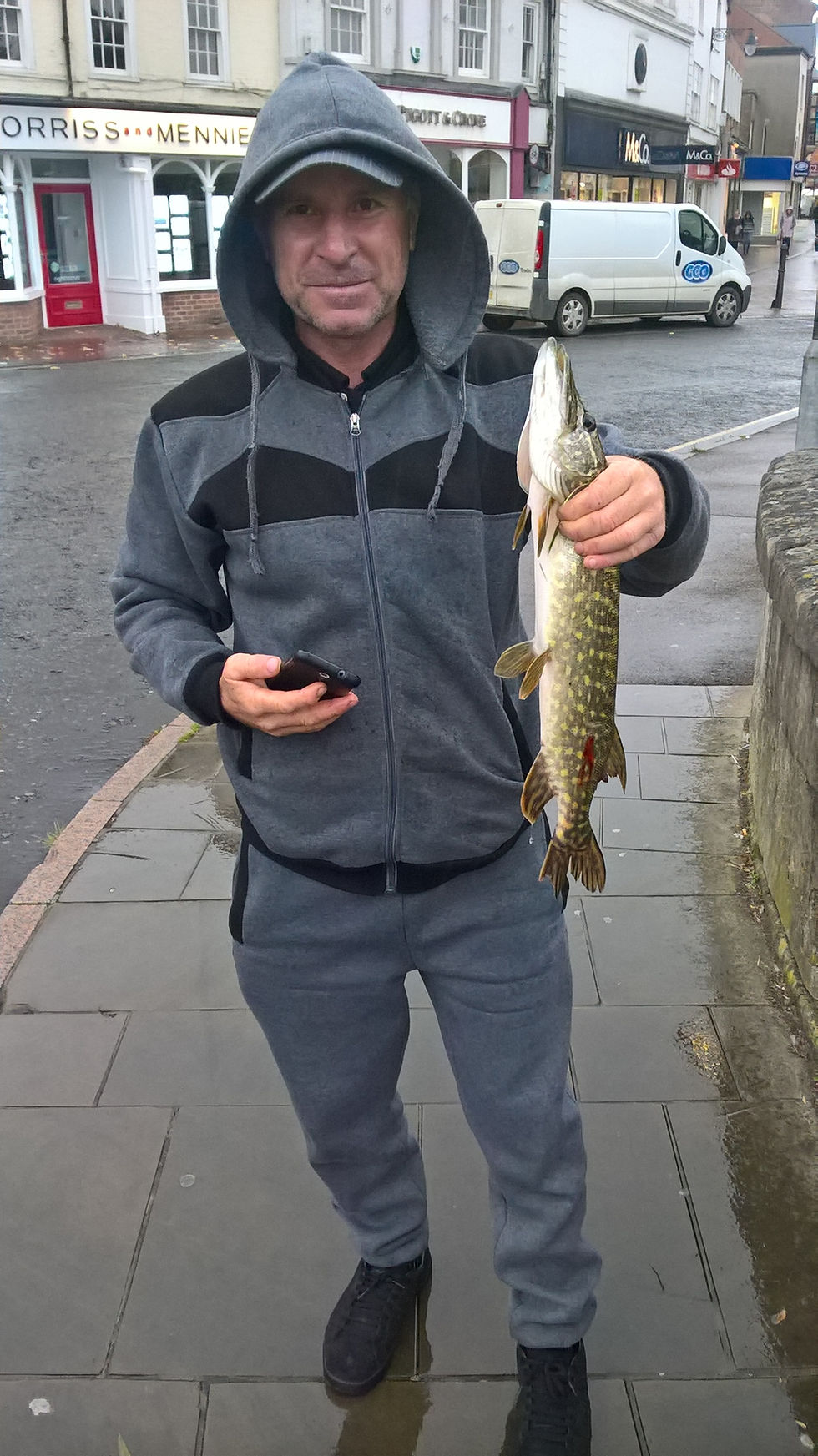Fenland Pike
- farmersfriendlincs
- Oct 8, 2022
- 4 min read
I remember the first time I saw a pike I would be about 5 years old and asked my parents what the fish was mounted in a glass case in the bar of a pub. It was a fearsome beast with a mouth of sharp teeth. The pub was The Three Pickerels at Mepal near the Ouse Washes. A “pickerel” is the name given to a young pike.
Pike are a vivacious hunter that thrives in the drains and waterways of the fens. One evening when I was about 13 me and my father were walking along the Vernatts drain at Surfleet Reservoir near Spalding when ahed of us we saw a mallard duck vanish in a splash never to reappear. We could only guess that it had been taken by a pike. Now, according to books, pike hunt alone, however, many years ago, when the River Welland had its level dropped for maintenance work in the centre of Spalding I saw three pike kill and rip apart a mallard duck. My mother told me tails of how farm workers down the fen would spear a pike with a pitch fork and hook it out the drain. When they lived down Twenty Drove her brother caught a pike and took it home still alive. When her mother went to pick it up it bit her arm only letting go when she chopped its head off with an axe. Whilst pike can make good eating I am assured they are full of bones. In my childhood I do recall seeing pike steaks for sale at Hayes fishmongers in Spalding and in the Lincoln covered market. In recent times I have seen smoked pike steaks for sale in a food fair. Mostly this fish is now confined to the private dinner table of the enthusiast or fancy restaurants.
But, if we go back in time pike were highly regarded and the fen pike were amongst the best tasting it was thought on account of all the eels they fed upon. Camdens Brittania of 1695 quotes the then wel-known proverb, “Witham pike, none the like.” refering to their good eating.
“He is the Wolfe of the water, but is indeed a monster of Nature; for the Wolfe spares his kinde, but he will devour their own.” (1625)
“Tho’ the rich Pike, to entertain your guest smokes on the board and decks a royal feast.”
Waniere 1750 – indicating the value this fish was regarded.
The fenman had several methods of catching pike with some of them not dissimilar to catching eels. Pike could be speared with a pike spear. This may be done as the fish cross land in shallow waters of a flooded wash. I have seen a pike successfully cross from one drain to another in about two inches depth of water. Provided their gills are wet, like eels, they can cross short areas of land. Pike were more likely to be speared from a punt or the side of a drain or dyke.
Nets and bated hooks were used:
“Lay a flue net of fine twine single walled of say 7 feet deep by 35 yards long and then beat the fish into the net.
Again, moor the punt in the middle of the lake on a cord as for sea fishing that is a stout cord with a heavy lead at the bottom ; tie two or three gimp snap hooks with swivels (the last three yards of line being gimp) at equal distances on the line from the bottom, viz. 1 foot, 2 feet, and 3 feet, the lead being at the bottom of the lake. Bait the hooks with live gudgeons or large minnows.”
If the later did not catch a pike it may catch eel. It is certainly a similar method to the “trimmers” used by fenmen Josh Scott and Ernie James at Welney. That is, a short length of round wood with a line attached, weighted and hooked with a large hook. The line is wrapped around the stick leaving about three feet loose. If an eel or pike takes the bait the fenman looks for his trimmers to spy what has been taken. Sometimes instead of a stick a corked bottle would be used.
This use of trimmers is recorded in Whittlesea Mere in 1805:
“The boatmen, early in the morning, baited the hook at the end of a long line, so fastened to the stake as to unwind at the slightest pull. The trimmers were examined in the course of the dayby the visitors, who were punted along in the flat-bottomed boat. It was worth while to send to the Ouse for gudgeons as bait when a good days sport was required. Pike of 5lb to 12lb weight, eels 2lb. to 3lb.to 4lb. were frequently caught.” [i]
It is worth noting that it is in this era that we see fishing, and shooting for that matter, being partaken for sport alongside that for income and sustenance of the fenman.
Nowadays most of the pike fishermen I encounter on local rivers around the fens are east European. Talking to them they take very few home to eat depending upon size and even then the quantity of bones make it unpopular.
[i] Reminiscences of Fen and Mere J M Heathcote 1876


Comments